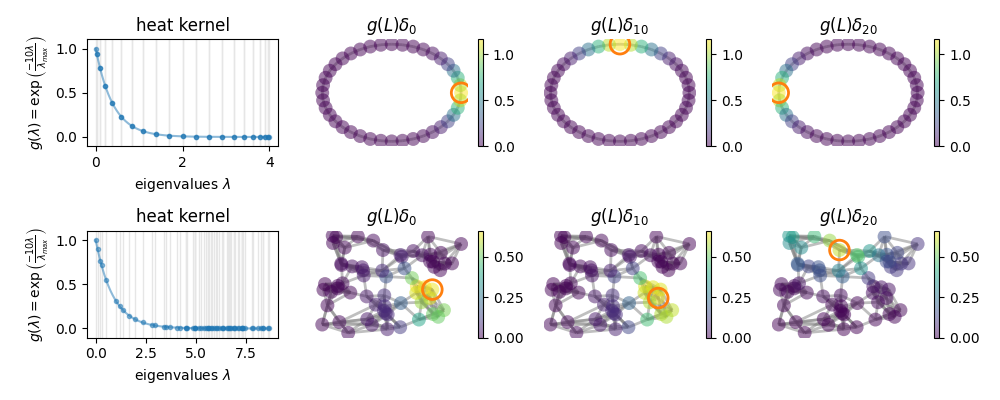Note
Click here to download the full example code
Kernel localization¶
In classical signal processing, a filter can be translated in the vertex
domain. We cannot do that on graphs. Instead, we can
localize() a filter kernel. Note how on classic
structures (like the ring), the localized kernel is the same everywhere, while
it changes when localized on irregular graphs.

import numpy as np
from matplotlib import pyplot as plt
import pygsp as pg
fig, axes = plt.subplots(2, 4, figsize=(10, 4))
graphs = [
pg.graphs.Ring(40),
pg.graphs.Sensor(64, seed=42),
]
locations = [0, 10, 20]
for graph, axs in zip(graphs, axes):
graph.compute_fourier_basis()
g = pg.filters.Heat(graph)
g.plot(ax=axs[0], title='heat kernel')
axs[0].set_xlabel(r'eigenvalues $\lambda$')
axs[0].set_ylabel(r'$g(\lambda) = \exp \left( \frac{{-{}\lambda}}{{\lambda_{{max}}}} \right)$'.format(g.scale[0]))
maximum = 0
for loc in locations:
x = g.localize(loc)
maximum = np.maximum(maximum, x.max())
for loc, ax in zip(locations, axs[1:]):
graph.plot(g.localize(loc), limits=[0, maximum], highlight=loc, ax=ax,
title=r'$g(L) \delta_{{{}}}$'.format(loc))
ax.set_axis_off()
fig.tight_layout()
Total running time of the script: ( 0 minutes 1.012 seconds)
Estimated memory usage: 25 MB